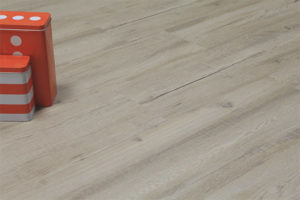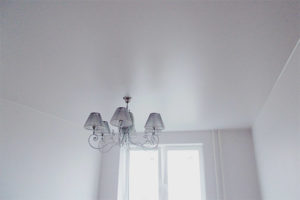The content of the article
Does the creaking of wooden floorboards annoy and make you nervous? It’s impossible to go to the toilet at night without waking all family members? An unpleasant sound appears due to the deformation of the wood, which dries up over time. Slots form between the boards and lags or baseboards, they rub against each other and creak. Sometimes nails or support bars are to blame, so the fight against creaking begins with a thorough study of the flooring.
Oxidative processes
Boards are even and elastic, without cracks and dents? Do not bend when walking? The noise source may be the nails that fixed the boards during installation. Metal parts are rusted, reduced in volume and deformed, and the wood that held them in place loses its strength and collapses. The nail loosens and moves, making unpleasant sounds.
Rusty metal mounts are replaced with self-tapping screws. Details are screwed at a distance of 4-5 mm from the nail head. At least 2 self-tapping screws are taken for each creaking board to fix it securely. A new fastener is screwed into the wood with a hat so that it does not interfere with moving around the room. Old nails are pulled out with pliers or a nail puller.
Secure hold
Hats of metal mounts do not protrude and firmly sit in place? The reason for the noise is in the boards themselves, which rub on the logs. If the apartment is built of dense concrete slabs, the creak is eliminated with anchors. Closed and wedge varieties or rod clamps are suitable.
You need a drill that makes a hole in the creaking board and the support bar. Concrete is drilled with a puncher, and then an anchor is inserted into it and the nut is tightened to fix it. Fasteners are mounted all around the room at a distance of 1 m or more.
Squeaking disappears for a long time with proper use of the anchor, but the method itself is quite costly.
Foam and wedge
Do the boards bend and make a distinctive sound? You will need mounting foam and a drill. Drill a hole in creaking wood. Insert the tip of the can into it and squeeze the foam. Use the low secondary expansion option to prevent deformation of the boards.
Squeeze out a small amount of foam, wait until the filler hardens. Do not put furniture on the board or step on it. After drying, remove the remaining foam, cover the hole.
The mounting foam lasts for 1-3 years, depending on the location of the board. If the floorboard is often stepped on, the filler settles quickly, and a creak appears again.
Beginners who have not previously worked with such materials can fill the void by half or pour more foam than necessary. The lack of filler, as well as its excess, leads to deformation of the floorboard. The board swells in several places or becomes cracked, and you have to replace it.
Wood in the autumn and winter season absorbs moisture and swells. In summer, the liquid evaporates, the board dries and decreases in volume. After 2–4 years, small gaps form between the floorboards, due to which a creak appears.
You will need a thin wooden rail, which is sharpened from one end. It turns out a cone-shaped wedge. The blank is applied to the gap, it should be wider by 1-2 mm.
Joiner's glue is applied to the sharp end and a wedge is inserted into the slot. Hammer the rail with a mallet or an ordinary hammer wrapped in a towel. Not much to happen so as not to deform the wood. Wait until the glue has completely dried.
The protruding part of the rail is cut off with a plane or a pointed ax, sanded and coated with putty.Apply paint to the wedge so that it does not stand out from the floor.
In small gaps pour baby powder or graphite talc. The material protects wooden elements from abrasion and removes an unpleasant sound.
The cracks between the boards are sealed with a special paste, which includes:
- sawdust - 4 parts;
- paint for wooden floors - 1 part;
- clear varnish - 1 part.
Stir the components until homogeneous, spread with a spatula or a thin stick throughout the gap, tightly compacting the mass. Flatten the paste, wait until it dries. Sand over protruding areas, paint over.
Alternative paste composition: sawdust and glue. Prepare a thick paste from the components, cover the cracks.
Rallying floorboards
Multiple gaps form between old boards made of low-quality wood. One wedge is not enough to get rid of a creak. We'll have to remove the boards and re-stack.
First, the skirting board is removed and the nails are carefully removed, being careful not to damage the wood. Rotten or deformed floorboards are thrown away, whole specimens are laid aside. The first board, located next to the wall, is left in place. It is not necessary to remove the floor in the whole room, you can start on one side.
The board is laid on the logs and pushed to the main board with wooden wedges. The details are tapped with a mallet so that no gaps remain between the grooves. The hole that appears after removing and reinstalling the old boards is closed with a new floorboard. It should be 4–5 mm wider than the gap.
The item is attached to the logs with self-tapping screws. The last stage is the installation of a new baseboard and painting the floor.
Jewelry work
Even quality wood is destroyed over time. The cause of deformation can be insects, rot, high loads. When one or several floorboards creak, it makes no sense to change all the boards. It is enough to remove the damaged part and insert a new part.
The deformed area is outlined with a pencil or marker. You will need a drill of small diameter, with the help of which several holes are made in the floorboard. They are needed to separate the rotten part from the floor and not to damage neighboring boards.
The drill is laid aside and a chisel is taken. Hold the tool at an angle of 45 degrees. Using a hammer, hollow out the rotten part of the floorboard. The parameters of the new insert must match the size of the hole. The board is sharpened from the inside to make conical edges.
Joiner glue is applied to the wood, the hole is closed and the bar is fixed with self-tapping screws. The protruding edges are cut with a planer, then the wooden patch is polished and painted. If the work is done correctly, the floorboard ceases to creak.
Soundproofing layer
Do the boards fit snugly? Is wood quality and without damage? There are no gaps between the parts and even a small gap, but do the boards continue to creak? There are two options: completely replace the floor or lay on top of a wooden base plywood boards. The second method takes less time and finance.
Buy only high-quality and dense plates. Thickness is from 12 mm and more. The wooden base must be aligned, otherwise not only floorboards will creak, but also the top layer.
Before use, remove the plywood from the packaging and arrange it so that the sheets dry. Move the furniture to another room, clean the floor of debris, vacuum and wash. Stack the material in a checkerboard pattern, retreat from the walls 1.5–2 cm. It is impossible that the joints of sheets lying side by side intersect.
Before fixing, plywood is laid out on the floor and the location of each piece is noted. Then the details are glued to the wooden boards and wait until they dry. For insurance, the sheets are fixed with self-tapping screws 4-5 cm long. The fastening is screwed into the plate together with the caps. Between the screws, a step of 20 cm is observed.
Large sheets of plywood are divided into 2 or 4 parts to minimize deformation of the material when exposed to moisture. Technological gaps must be left between the plates.
New floor
Owners of old apartments with rotten or rotten boards are recommended to remake the floor. The process is long and costly, but sometimes there is no other way.
When installing new boards on a concrete base, a heater is laid. The space between the supporting beams is filled with drywall, expanded clay or mineral wool. The material performs a waterproofing function and prevents the accumulation of excess moisture in the wood. These are preventative measures that protect the floorboards from deformation and squeaking.
Natural wood planks look good and expensive. But wood wears out faster than marble, stone and linoleum. To protect the pine or oak floor from deformation, ventilation systems are installed in the rooms and they monitor the humidity of the air. Timber, which is regularly taken care of, collapses more slowly and for a long time is "silent", without issuing a single creak.
Video: how to eliminate the creak of a wooden floor











Submit